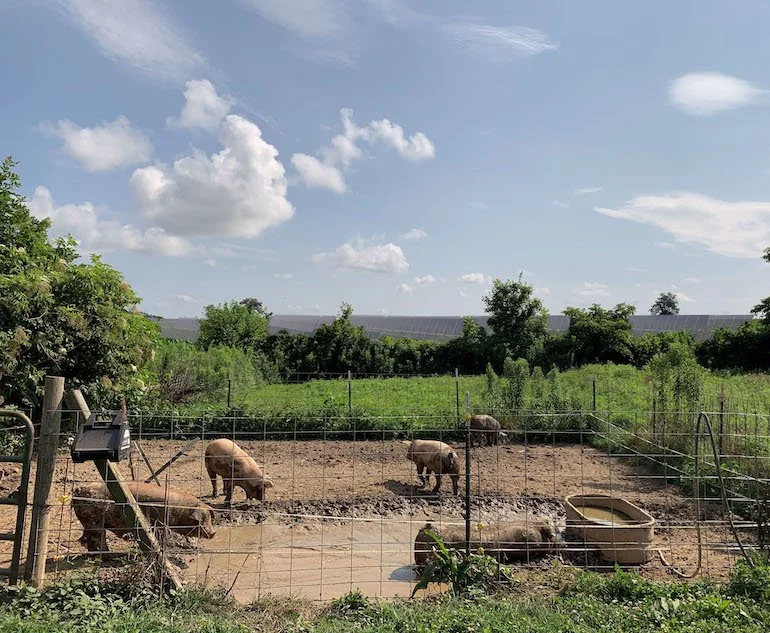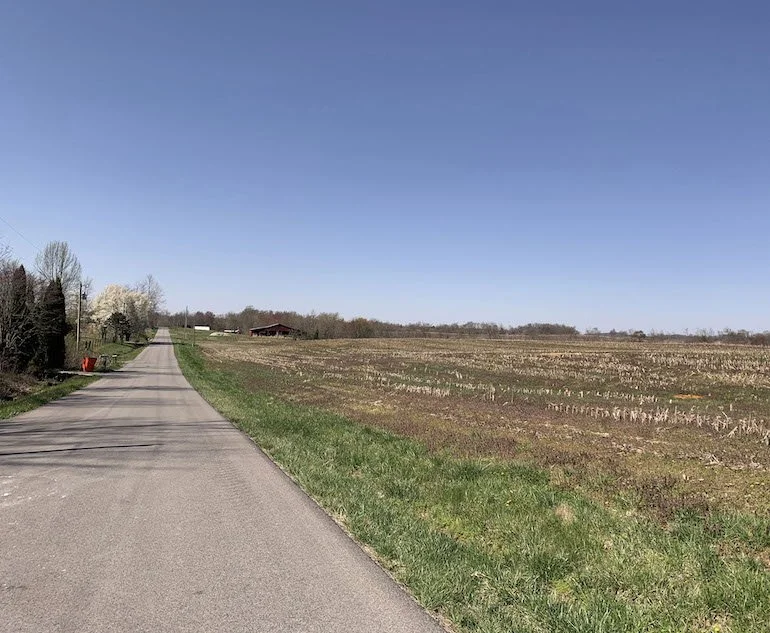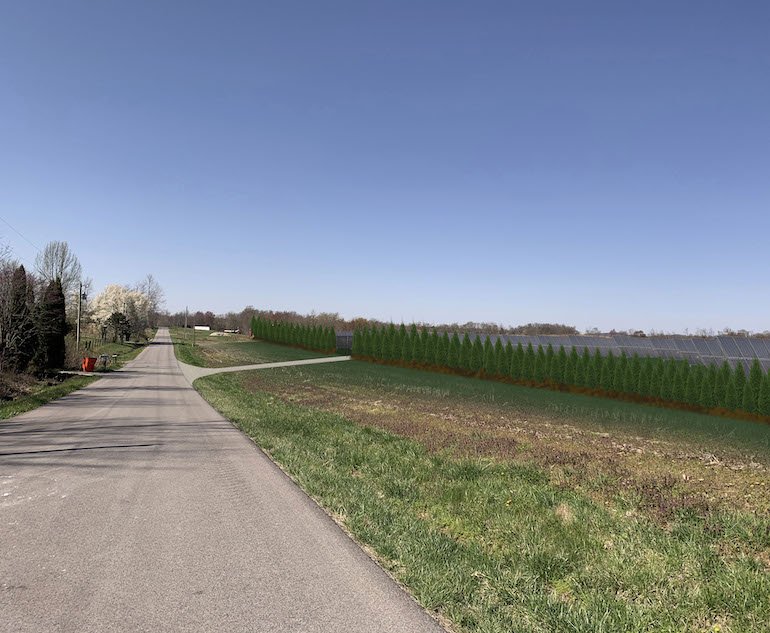How solar developers can respect property ownership rights while providing benefits to host communities
Originally posted on Solar Power World and co-authored by Wesley Smith and Nathan Coleman.
As more landowners, utilities and other stakeholders realize their properties can be prime for large solar installations, some unique challenges have cropped up. In particular, landowner rights are being discussed with more and more of these renewable projects. The idea of NIMBY (Not In My Backyard), which applies to the people who want the benefits of major infrastructure, but don’t want those projects sited near them, used to apply just to fossil-fueled, polluting energy sources. Neighborhoods would push back against massive power plants they thought would pollute their area or pose safety hazards. But as renewable energy has grown, along with project sizes, NIMBY has become something solar developers have to deal with as well.
The NIMBY concept is tied to the passionate feelings around property ownership rights. At ibV Energy, we’ve seen these strong reactions firsthand and up close. Being able to navigate these challenging conversations has been critical to helping advance utility-scale solar projects into new, less-traditional markets.
Defining and contextualizing property ownership rights
Pigs graze on a site for an ibV solar project in the works.
Property ownership rights are the broad set of legal protections that property owners can rightfully expect regarding their land, how it can be used and what others can and cannot do on or near that land. Beyond being just legal protection, property ownership tends to evoke strong emotional responses. The United States has deep historical context in terms of the dream of owning land, what doing so meant in terms of self-sufficiency, and how strongly people would push back if they felt those rights were challenged.
Across the country, different regions see their ties to landowner rights framed based on dominant industries. For example, the South has often held land ownership particularly dear as they made their livelihoods on agriculture and, more recently, oil and gas development. The rights of owners of these types of properties were paramount to economic development, so preserving those rights was even more crucial. As noted by Jim Kusilek, landowner at ibV Energy’s Maple Grove Project in Baron County, Wisconsin:
A rendering of what the land will look like in the background when the solar project is complete.
“Historically, members of most rural communities accepted the rule of thumb that each landowner could do, for the most part, what they wished with their 5-, 10-, 50- or 500-acre parcels, as long in doing so they did not interfere with their neighbors. So dairy barns, chicken coops, and horse paddocks were built and fence lines sprung up. Eventually, 120-acre farms were combined with the neighboring 120-acre farm. In some instances, 100-year-old trees get cut down, all in the interest of progress. But community members accepted this outcome because doing so was part of the landowner’s right. ‘I don’t want my neighbor telling me what to do, so I can’t tell him what to do,’ or so the thinking went.”
Where these conversations about property owner rights can get contentious, though, is when neighboring landowners disagree. These rights are retained to ensure property owners can sustain a living on their land, but the key is ensuring that in doing so they don’t harm or infringe on the equally important rights of neighbors.
Property rights and solar development
An existing landscape for an ibV project in the works.
Landowners and farmers across the country have built a legacy on agricultural property. But the reality is that the farming generation is gradually disappearing, with lots of family owned farms coping with the fact that no one wants to carry on the agricultural business. The advent of agrivoltaics, or using this land in whole or in part to site large-scale solar panel installations, has provided these landowners an opportunity to preserve the legacy of their land and provide value and even retirement for all the hard work they put into the farm over the years.
Agrivoltaics allow for this land to continue to farm, while also adding a new type of harvest: solar energy. The most successful marriage of solar energy and agriculture comes from dual-use, where part of the land is utilizing solar panels but key types of crops and livestock can readily coexist. This includes employing sheep to maintain the grass around the solar panels, growing pollinator-friendly plants as groundcover and more.
A rendering of what the land will look like when the project is complete, including potential tree growth used to appease communities who don’t want the solar to be visible from the road.
However, these landowners who want to embrace a solar future must deal with an overly complex and at times contentious permitting process. The bureaucracy that landowners must navigate includes a myriad of federal-, state- and county-level red tape, each with unique requirements, permitting fees, required surveys and studies, and more. Notably, these landowners must deal with zone change permits if they want to use their land to develop a solar farm rather than traditional crops, only further adding time and cost to the process.
In particular, developing a new solar project requires owners and developers to address concerns on environmental impacts of the solar installation and how it will impact nearby property values. These considerations create tricky spots for landowner rights. If a neighboring farm worries about potential environmental hazards of solar panels being installed next door, they are going to express that in the context of their own property rights in contrast with the potential solar owner’s property rights. In discussing the perspective of landowners on property rights for such projects, Kusilek shared how solar should actually be seen as a boon, not a detriment:
“In the context of a citizen having the right to influence the property use of their neighbor, historically, neighbors have had a handful of aspects that could trigger a valid claim: Noise, odor, visual appearance, traffic and burdening the community with social costs. In the context of multi-acre solar farms, the only one of these five key contentious items that appears relevant is visual appearance, while the last one actually presents itself as an asset or strength, moving from a cost to a benefit!”
The irony is that many typical uses of farmland can be more troublesome to neighboring lands, making the clean, safe and valuable solar installations appear as a best-case scenario. For example, chicken farms, hog farms and feed lots bring measurable and concerning environmental hazards like storm water runoff issues, foul odors, noises and environmental impacts. Traditional farmers may also be using herbicides and fertilizers that bring their own environmental impacts and public health concerns. But in the end, the property rights of these farmers are protected and allow them to incorporate these uses of their architectural land if they choose. They can build them tomorrow without any permitting or input from surrounding landowners. That ability is fundamental to landowner’s rights, and it would all occur without the scrutiny they would encounter if they wanted to install solar panels.
What solar developers can do
Although large-scale solar projects don’t materially harm the surrounding community, they can be contentious with neighbors. This issue often comes from misinformation, unfounded fears and uncertainty about what it looks like when new technology finds its way into a community for the first time. That’s why part of the role of a solar developer must be to educate those communities.
Solar developers considering a new project in such an area can promote education and facts in some key ways:
Be prepared to go into the community, whether via a town hall or on a one-on-one basis, to answer questions on the realities and the impacts of solar installations
Provide educational materials about the long lifetime and value of the projects
Tap into the facts behind what having locally sourced solar power means for the energy grid in the community
Share information on the net benefits of solar installations, such as cleaner air, rising property values, new jobs and economic value, opportunities for education (like at the Center for Energy Education), and lower energy prices.
In the end, solar developers must respect property ownership rights. Many great industries have been built on the back of protecting these rights. While community members may be anxious and push back, the best approach is to engage in dialogue and education. That said, solar developers must also not be afraid to confront misinformation with the facts about why those property owners can and should embrace these projects. Education can and will bring these communities to value solar for the benefits it will bring.




